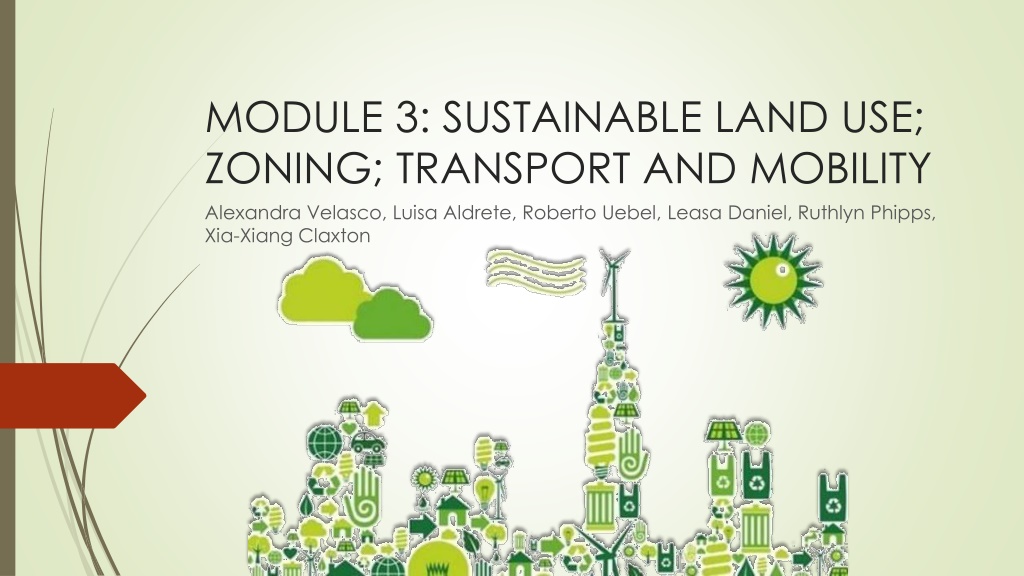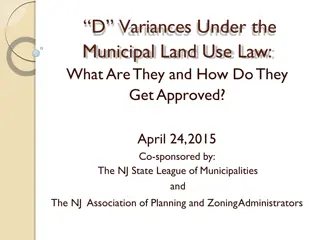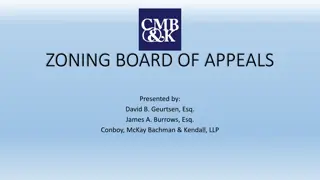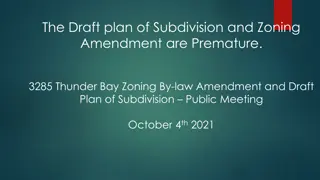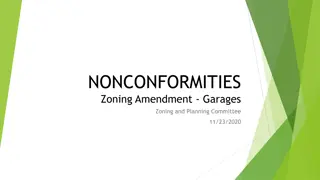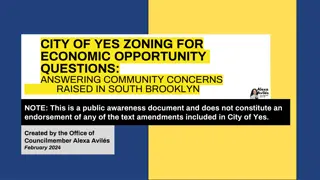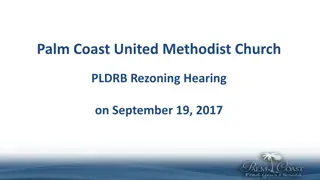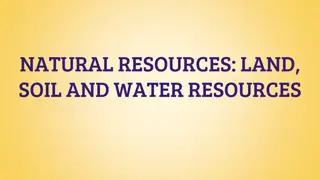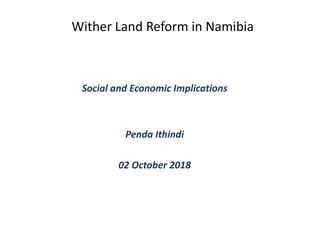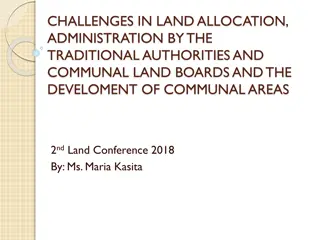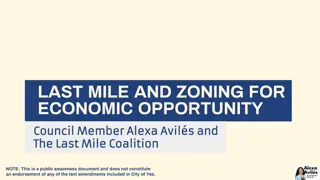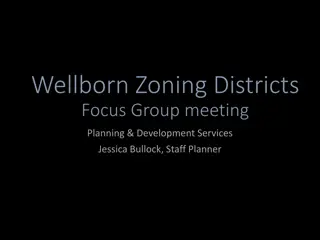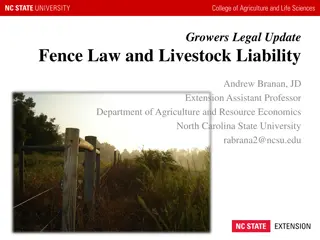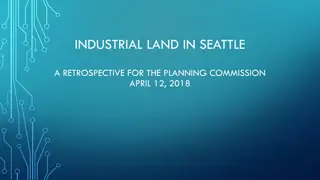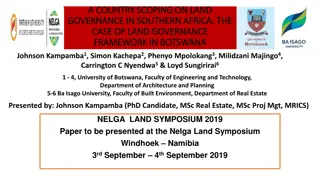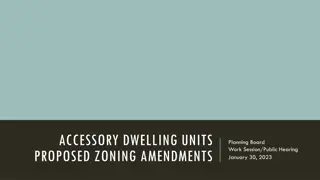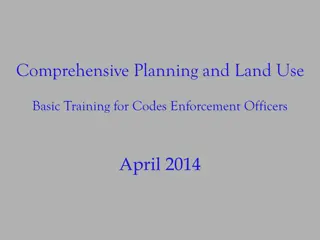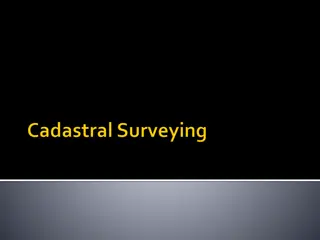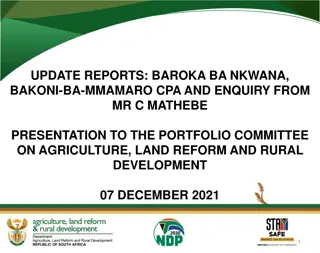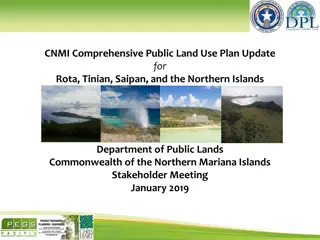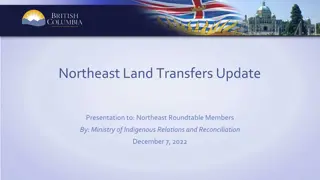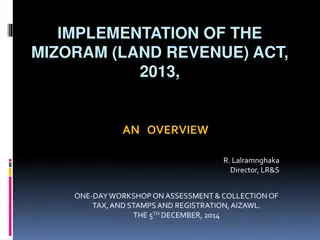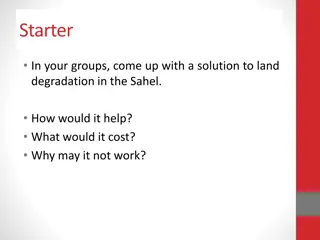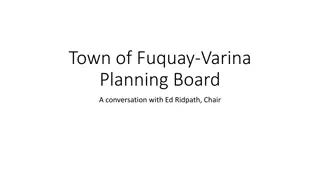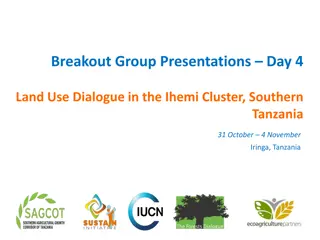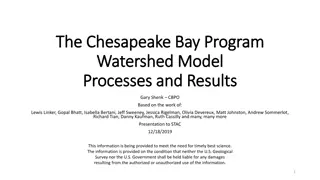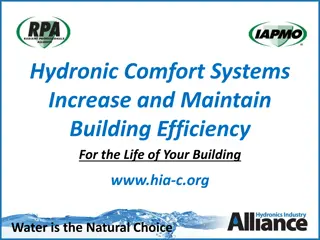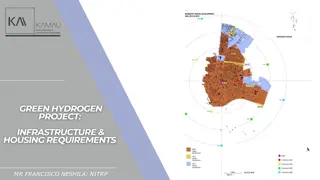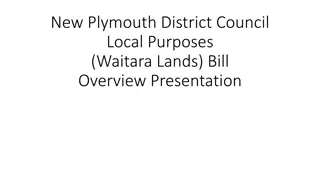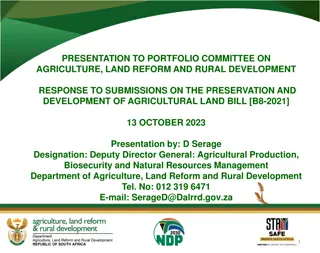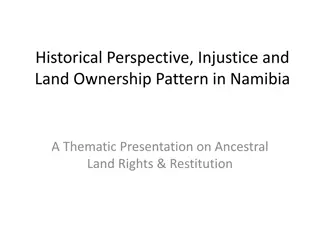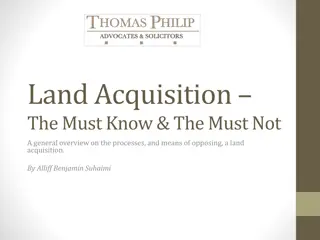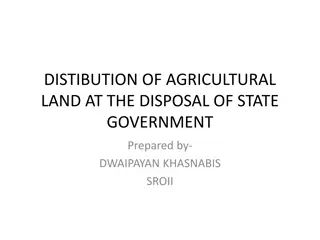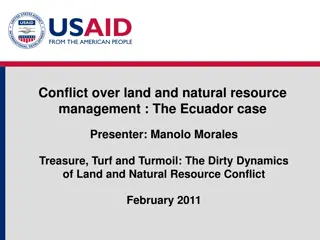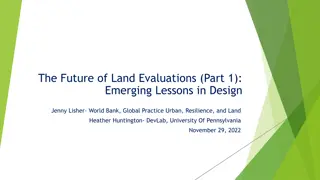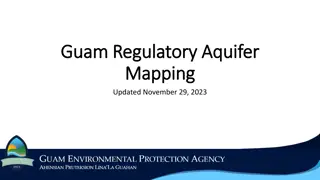Sustainable Land Use and Zoning in Basseterre: Challenges and Solutions
Sustainable land use and zoning in Basseterre, Saint Kitts and Nevis face challenges such as lack of essential services in residential areas, insufficient infrastructure like sidewalks and parks, and limited public spaces. Recommendations include reserving land for green areas, widening pedestrian zones, decentralizing services, enhancing public transport systems, and creating inner green spaces to improve the city's sustainability and livability.
Download Presentation

Please find below an Image/Link to download the presentation.
The content on the website is provided AS IS for your information and personal use only. It may not be sold, licensed, or shared on other websites without obtaining consent from the author. Download presentation by click this link. If you encounter any issues during the download, it is possible that the publisher has removed the file from their server.
E N D
Presentation Transcript
MODULE 3: SUSTAINABLE LAND USE; ZONING; TRANSPORT AND MOBILITY Alexandra Velasco, Luisa Aldrete, Roberto Uebel, Leasa Daniel, Ruthlyn Phipps, Xia-Xiang Claxton
Basseterre, Saint Kitts and Nevis Area: 6.1 km2 Population: 19.000 inhabitants (2013) Density: 2,54/km2 Weather: 29 C, E Wind 24 km/h, 72 % humidity HDI: 0,752
What is sustainable land use and zoning? "In its most pragmatic sense, the right to the city is born out of the collection of basic rights to well-being and development, such as the right to decent housing and the efficient provision of basic services that are friendly to the environment, the right to an adequate quality of life, the right to social, individual and psychological well- being, as well as from the creation and revitalization of the public space in order to foster citizen participation and co-responsibility, being the material support of social, cultural, learning and recreation . UNDP, 2015
What is sustainable land use and zoning? Integration of the informal city with the formal city by matching the level of services between rich and poor neighborhoods, which implies public or private investment in infrastructure, equipment and services Provision of social services with a priority focus on vulnerable groups, adjusting to the realities and needs of the communities Integral interventions, combining physical interventions with social and in some cases economic, and integrated and coordinated execution of the different components Participation of the community in all stages of the intervention and maintenance.
SUSTAINABLE LAND USE AND ZONING ISSUES Residential zones outside Basseterre don t have any other services like food stores, leisure places, service centers No wide enough side-walks in the streets, no inner parks, no green furniture in public spaces SOLUTIONS AND RECOMMENDATIONS Reserve land space for green areas, wide pedestrians zones, and plan urban centralities > descentralization of services Take out one lane used for parking areas, and make wider pedestrians zones, with trees and urban furniture and pacified transit. Public transport system for avoiding use of private car in city center Rulement for public spaces To create inner green areas, green roofs and other green surfaces in order to refresh the area To plan a comprehensive building code that plans efficients heights for buildings taking into account the wind currents, sun movements, rain and humidity > urban metabolism Urban heat islands due to artificial barriers like high buildings in the shore.
SUSTAINABLE LAND USE AND ZONING ISSUES SOLUTIONS AND RECOMMENDATIONS Big areas of land and with the best location and view are bought by rich foreigners causing higher land prices (land speculation) > expulsion of local inhabitants No land reserve for stopping urban sprawl or land prize speculation Comprehensive land use plan that taxes more foreigner investors and compensates local people for their land Government has to have land control through a land reserve in the surroundings of Basseterre in order to avoid urban sprawl Government have to designate land for food production either in the outskirts of Basseterre or inside as urban agriculture program Products that can be produced in Basseterre, are imported from other distant countries, like milk, meat, poultry, some fruits and manufactured food. Vendors on the side walks occupy space for pedestrians Rules for vendors and relocalitzation in appropiate sites
What is sustainable transport and mobility? The term transportation refers to all movements in a transport network, while mobility describes the possibility and ability of an individual to move. Therefore, mobility is the possibility of an individual to participate in activities that require travel. Each citizen should have the option to be part of social, economic, cultural and political activities, therefore, the main criterion of quality of mobility is not the distance covered, but the number of activities that an individual performs. Sustainable mobility refers to the possibility for an individual to carry out his activities without compromising the availability of natural and energy resources for present and future generations and where, on the whole, individual actions are aimed at improving the quality of the environment, maintaining a balance between economic, social and environmental protection.
SUSTAINABLE TRANSPORT AND MOBILITY ISSUES Too many cars inside the city center causing traffic, unsafety and big areas used for parking SOLUTIONS AND RECOMMENDATIONS Accesible and connective public transport system Parking in the borders outside the city Intermodality Pedestrianized zones inside the city center like the clock area Taxes for parking in public areas City center urban Tolls Safe intersections for pedestrians with zebra zones and traffic lights for them Wider sidewalks with trees and benches, bike lanes connecting origins and destinations Bikesharing system Few pedestrians and cyclists in the streets
Sustainable Transport and Mobility - Issues ISSUES Intersections don t work efficiently No policies for transport SOLUTIONS AND RECOMMENDATIONS Comprehensive program of intelligent traffic lights in the intersections Sustainable masterplan for transport and mobility Public investment for railways system for commuting and not only for tourism, creating intermediate train stations for people and modern wagons Railways system is used only for tourism and is not well maintained
